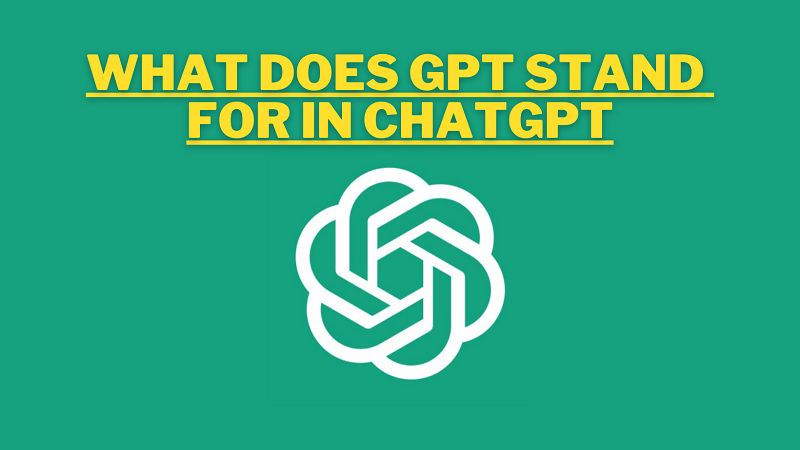GPT is an acronym that stands for Generative Pretrained Transformer. It’s a state-of-the-art language model that has been trained to understand and generate text. The GPT in ChatGPT refers to the specific type of language model used by OpenAI in their conversational AI.
How Does GPT Work?
GPT works by using machine learning algorithms to analyze large amounts of text data and identify patterns in language. This allows the model to generate new text that is coherent and contextually appropriate. The model is trained on a massive dataset and fine-tuned for specific use cases, such as chatbots, question-answering systems, and language translation.
The Benefits of GPT for Chatbots
Chatbots powered by GPT are able to understand and respond to natural language inputs in a way that is similar to how a human would. This makes them an excellent choice for customer service and support, as well as for generating creative content like fiction, poetry, and song lyrics.
One of the key benefits of GPT is its ability to generate high-quality, human-like text with little supervision. This means that chatbots powered by GPT can provide quick, accurate, and personalized responses to users without the need for extensive training or manual intervention.
GPT vs. Traditional Chatbots
Traditional chatbots use rule-based systems to understand and respond to user inputs. While these systems can be effective for simple queries, they often struggle to understand complex or context-dependent questions. GPT, on the other hand, uses a deep learning approach that allows it to understand the context and meaning behind user inputs, and generate highly relevant responses.
The Limitations of GPT
Despite its many benefits, GPT is not perfect. One of the main limitations of GPT is that it can sometimes generate inappropriate or offensive responses, especially when it is not fine-tuned for specific use cases. Additionally, GPT can struggle to understand the nuances of language and can sometimes provide irrelevant or nonsensical responses.
GPT and Privacy Concerns
As with any AI technology, there are concerns about privacy and data security when it comes to GPT. The vast amounts of data used to train GPT models can contain sensitive information, and there are concerns about how this data is being used and shared by AI companies. Additionally, there are concerns about how GPT chatbots could be used to manipulate or deceive users, especially in political or commercial contexts.
The Future of GPT in Chatbots
Despite these limitations, the future of GPT in chatbots looks bright. As the technology continues to improve, it is likely that GPT will become an even more powerful tool for natural language processing and text generation. Additionally, advances in data privacy and security measures could help to address some of the concerns about the use of GPT in chatbots.
Conclusion
In conclusion, GPT is a powerful language model that has the potential to revolutionize the way we interact with chatbots. Whether it’s for customer service, creative content generation, or any other application, GPT has the potential to bring a new level of natural language understanding and interaction to AI.
FAQs
- What is GPT in ChatGPT?
GPT in ChatGPT stands for Generative Pretrained Transformer, a state-of-the-art language model used by OpenAI in their conversational AI.
- How does GPT work in chatbots?
GPT works by analyzing large amounts of text data and identifying patterns in language
